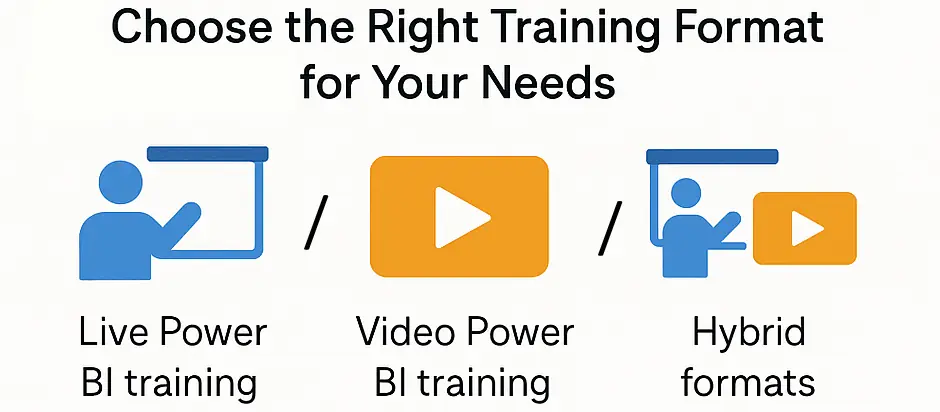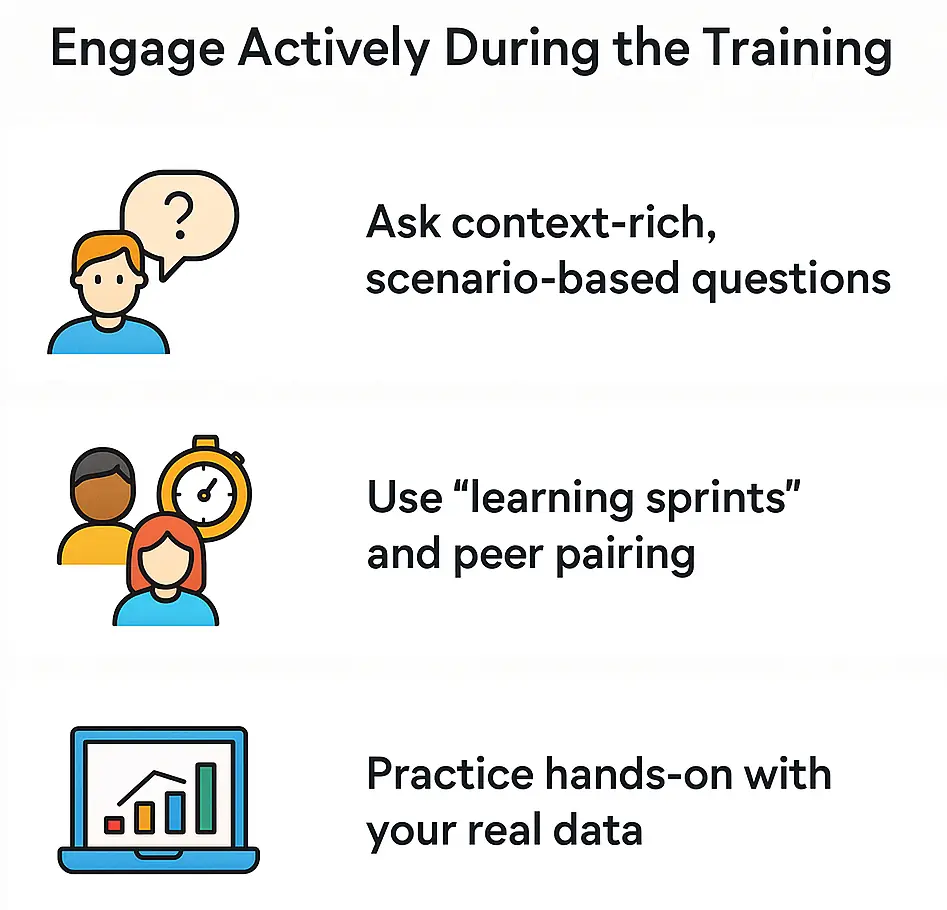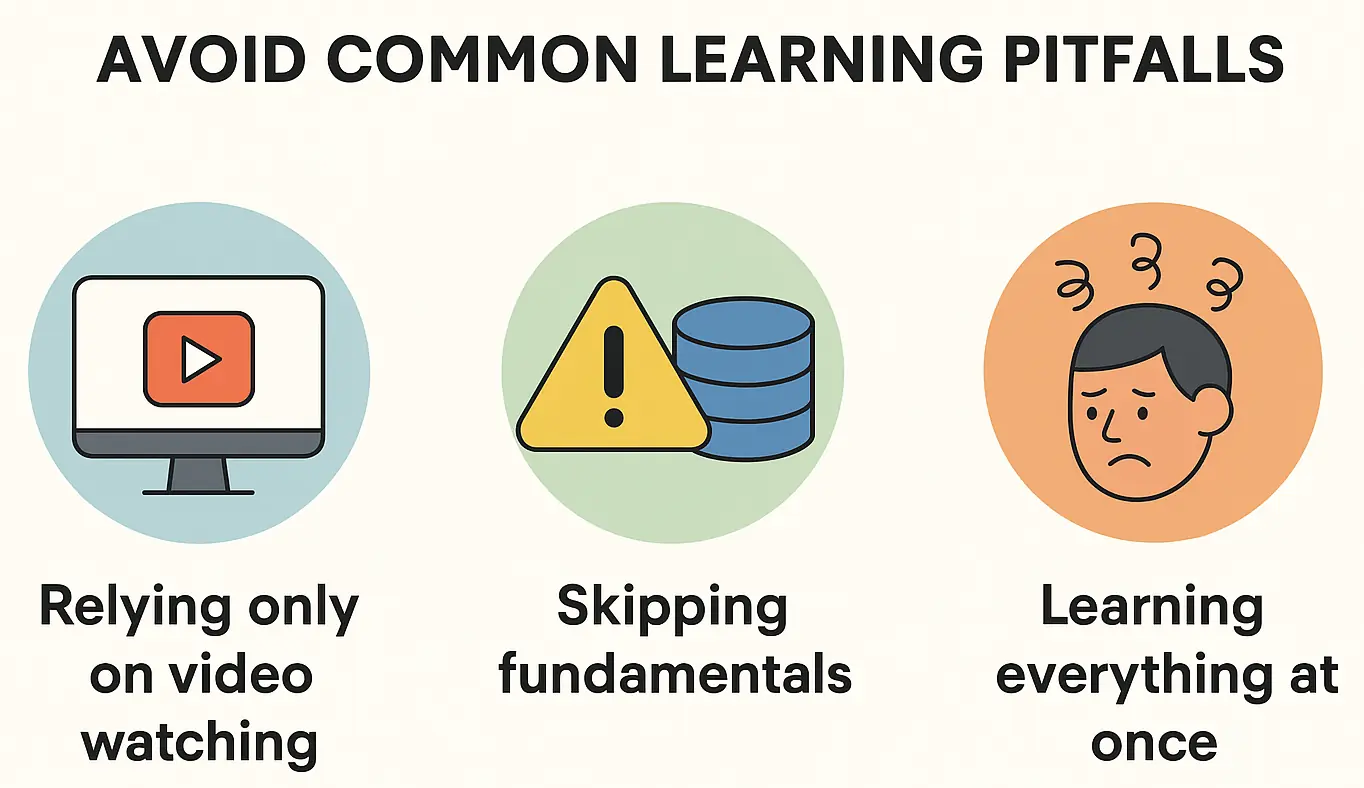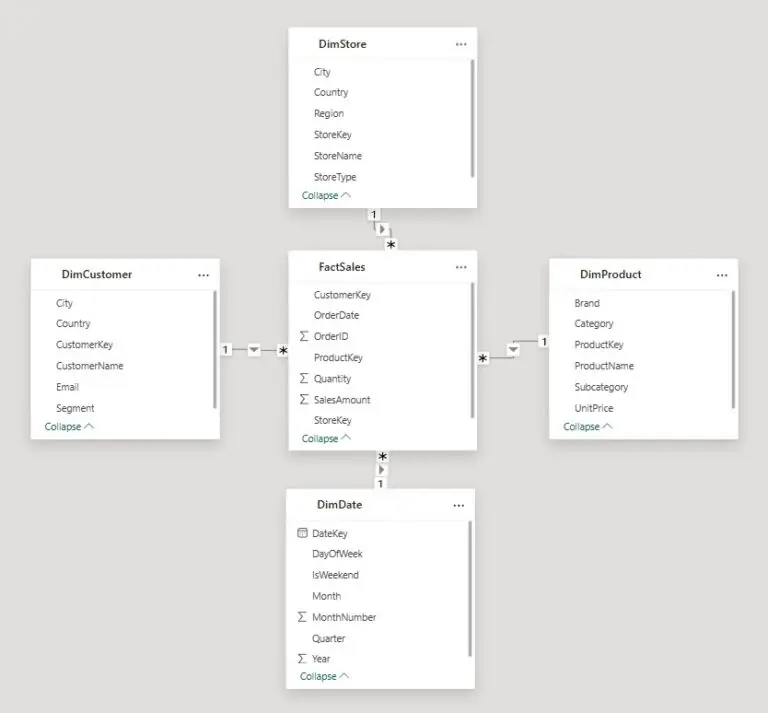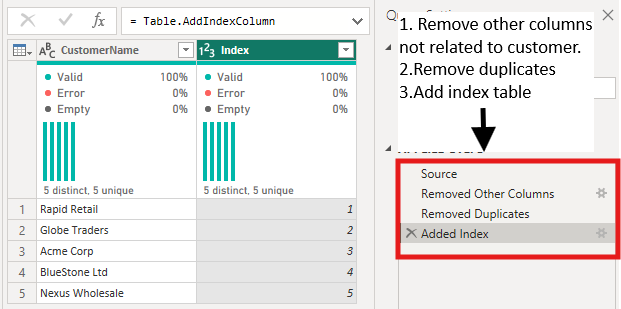
How to Get the Most Out of Your Power BI Training
Contents
- 1 Start with Clear Goals & Use Cases
- 2 Prepare Before Your Training Begins
- 3 Engage Actively During the Training
- 4 Reinforce Immediately After Training
- 5 Avoid Common Learning Pitfalls
- 6 Measure & Transfer Your Learning into the Workplace
- 7 Recommended Resources & Next Steps
- 8 Frequently Asked Questions (FAQ)
Investing in Power BI training – whether through live Power BI classes or a video Power BI course – is a commitment of both time and money.
Yet many learners finish their training only to struggle to apply their new skills effectively.
The good news? By preparing properly, engaging actively, and reinforcing strategically, you can dramatically increase the return on your investment.
This guide gives you practical strategies, grounded in learning science and real-world examples, to ensure your training translates into lasting workplace impact.
Start with Clear Goals & Use Cases
Training is most effective when tied directly to real-world business outcomes.
Define your business impact & KPIs
Before you step into the classroom (or hit play on a video course), identify what business outcome you expect to change.
-
Do you want to shorten report preparation time?
-
Improve accuracy of financial dashboards?
-
Reduce reliance on IT for day-to-day reporting?
Clear goals like these provide focus and a baseline to measure success afterwards.
Choose the right training format for your needs
Not all training formats suit every learner:
-
Live Power BI training: Real-time interaction, personalised feedback, and the ability to bring in your own data scenarios.
-
Video Power BI training: Flexibility, lower cost, and the ability to pause and revisit content.
-
Hybrid formats: Combine the structure of live teaching with the flexibility of video resources – often the most effective balance.
Prepare Before Your Training Begins
Preparation is often the difference between surface-level exposure and deep understanding.
Audit your data environment & maturity
If your data is fragmented, messy, or undocumented, it’s harder to apply training effectively. Review:
-
Where your data currently lives (databases, spreadsheets, cloud apps).
-
How clean and reliable it is.
-
Whether relationships between tables are documented.
By auditing this before training, you’ll bring concrete examples to class and get more relevant feedback.
Preload with mini modules or primer content
Even 30-60 minutes of self-study before training makes a huge difference.
Skim through Power Query basics, DAX syntax, or Microsoft’s own “Tips & Tricks for Report Creation.”
We often see the difference preparation makes.
Learners who audit their own data and bring real examples into the classroom ask sharper questions and leave with solutions they can use immediately.
In one session, a finance team brought their messy spreadsheets:
By the end of the day, they had the framework for a working dashboard built from their own data.
That kind of hands-on relevance sticks far longer than theory alone.
Engage Actively During the Training
Passive listening is the quickest path to forgetting. Instead, treat training like a lab where you experiment and test ideas.
Ask context-rich, scenario-based questions
Generic questions like “What does this function do?” are less effective than scenario-driven ones:
-
“How would this function apply to our sales table?”
-
“Could this DAX measure replace the manual report my team runs weekly?”
Use “learning sprints” and peer pairing
Break down your attention into 25–40 minute blocks, followed by quick peer reviews or summaries.
This aligns with the spacing effect: people retain two to three times more information when they revisit material at intervals, rather than cramming it in long sessions.
Practice hands-on with your real data
Bring in datasets you work with daily during the training.
Working on familiar reports and dashboards makes new skills immediately relevant and easier to apply – and raises questions you wouldn’t find in canned examples.
Reinforce Immediately After Training
Learning fades quickly unless applied. The key is to act within 24–48 hours.
Build mini-projects with your own data
Take one dataset you use daily and build a dashboard around it.
Use spaced repetition & review
Instead of simply rereading notes, test yourself: rebuild yesterday’s dashboard from memory.
This is retrieval practice – a proven way to strengthen long-term recall.
Avoid Common Learning Pitfalls
Many learners fall into predictable traps:
-
Relying only on video watching
It feels productive, but retention is minimal without hands-on practice. -
Skipping fundamentals
Without clean data and solid modelling, advanced DAX or fancy visuals produce misleading results. -
Learning everything at once
Power BI is vast — data modelling, DAX, visualisation, deployment, security.
Trying to master it all at once leads to cognitive overload.
Phase your learning: start with core visuals, then modelling, then DAX, then performance tuning.
Measure & Transfer Your Learning into the Workplace
The ultimate test of training isn’t what you know – it’s what you apply.
Establish adoption & performance metrics
Track outcomes such as:
-
Hours saved per report.
-
Number of dashboards created and actively used.
-
Reduction in refresh errors or failed reports.
-
Decision-making speed improvements.
When stakeholders see these metrics, adoption improves. Gartner reports that BI programmes with visible ROI metrics enjoy significantly higher long-term uptake.
Plan coaching & peer forums
Organisations that run monthly “Power BI clinics” or office-hour sessions see knowledge stick far longer than those that leave learners unsupported.
Knowledge is easier to recall in the same context it was learned.
If you’ll be analysing finance data at work, practise with finance data during training.
This ensures skills transfer seamlessly.
Recommended Resources & Next Steps
Extend your learning with curated resources:
-
Microsoft Learn Power BI path: Free structured modules.
-
YouTube channels like Guy in a Cube: Weekly practical demos.
-
Advanced Power BI training: For deep dives into DAX and enterprise deployment.
Frequently Asked Questions (FAQ)
Q1. Which is best – live or video training?
It depends on your goals. Live classes provide real-time answers and accountability. Video is flexible and cost-effective. Many learners benefit most from hybrid approaches.
Q2. How quickly will I see results?
With structured reinforcement, most professionals see measurable gains in efficiency within 4–6 weeks.
Q3. What if my data is messy?
That’s normal. Use training as a chance to build a data-cleaning and modelling framework. Start simple, then refine.
- Facebook: https://www.facebook.com/profile.php?id=100066814899655
- X (Twitter): https://twitter.com/AcuityTraining
- LinkedIn: https://www.linkedin.com/company/acuity-training/
